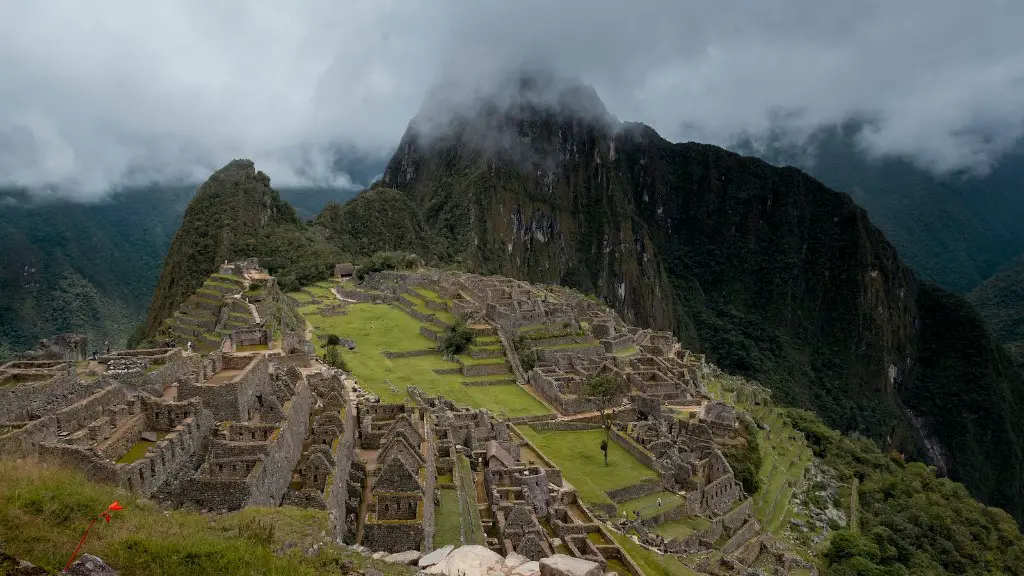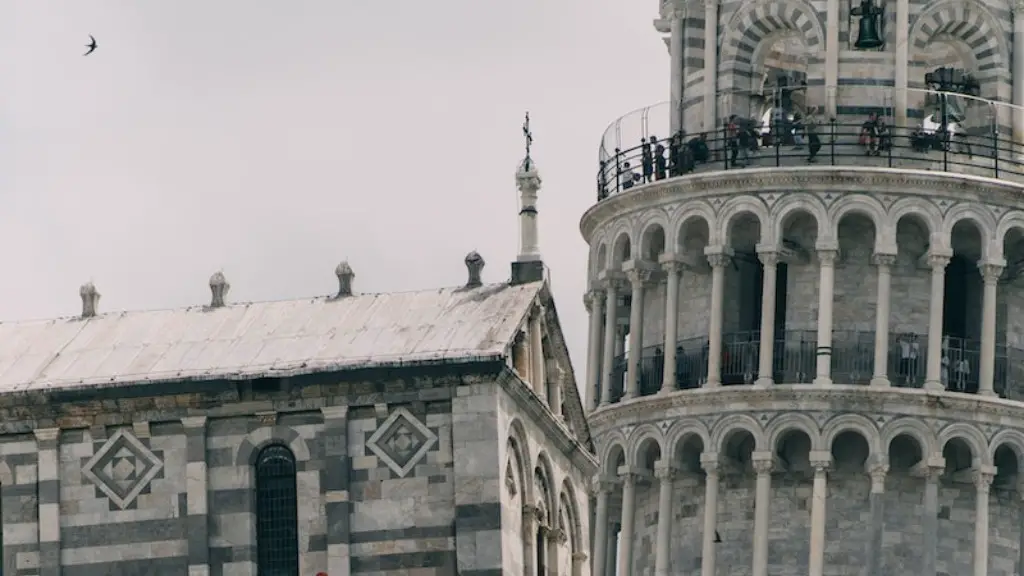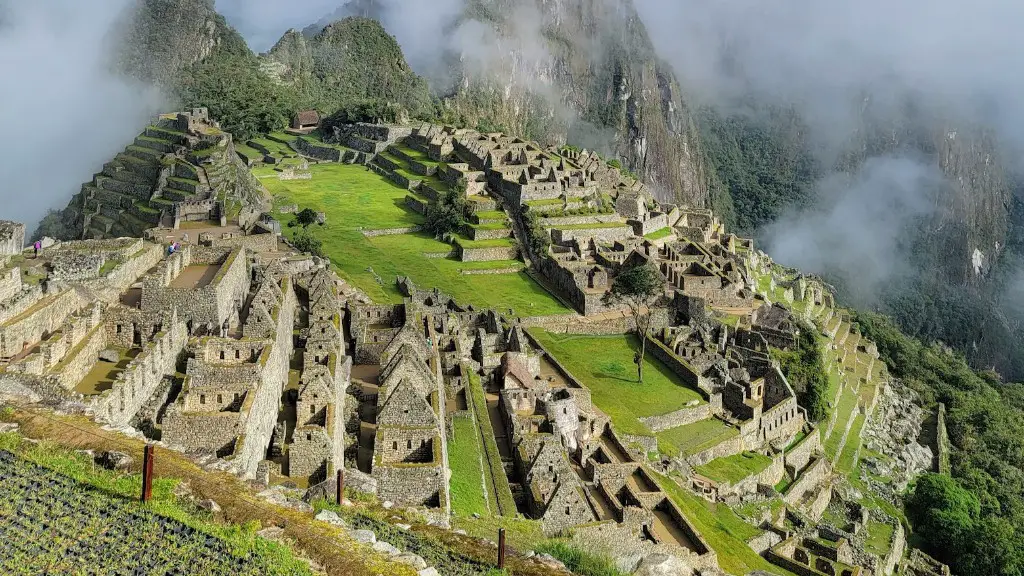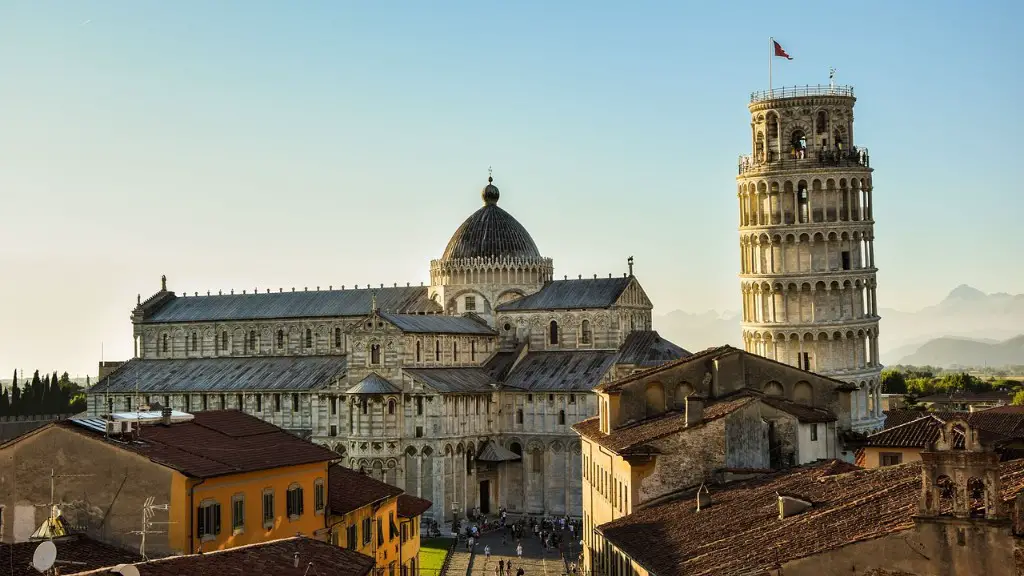Mount Kilimanjaro, the tallest mountain in Africa, is an iconic sight to behold, attracting tourists and adventurers alike with its lofty peak. Yet, how was this great mountain created? Many theories exist, but geologists agree that the colossal peak was formed millions of years ago, through volcanic activity and glacial erosion.
Mount Kilimanjaro, standing at 5,895 meters, is the highest summit on the African continent and the highest free-standing mountain in the world. It is composed of three distinct volcanic cones: Kibo, Mawenzi, and Shira. Scientists estimate that Kibo and Mawenzi were formed approximately 2.5 to 3.5 million years ago as a result of magma being forced upward through the Earth’s crust. The magma first cooled into pillow basalt and then solidified over time.
After eruption, glacial ice shaped Kilimanjaro’s mountain range. The continental ice sheets of the Pleistocene glaciation period, which began around 2.6 million years ago, covered most of the mountain’s summit in invulnerable glaciers. As this glacier flowed down the slopes, it scoured away the rock, causing it to take on its familiar peaked shape. Over the past few hundred years, however, this process has been reversed, with global warming causing the glacier to dissolve and disappear.
Geologists agree that Kilimanjaro’s unique formation was a combination of volcanic activity and glacial erosion, but the exact timeline is difficult to establish. Though the mountain’s summit is formed from volcanic rock, deeper sections are made up of sedimentary layers from various periods, making it difficult to distinguish the origins of particular rocks.
In recent years, the study of Kilimanjaro has taken on a more urgent note. The effects of climate change in the area are particularly extreme. From the turn of the 21st century, the mountain’s ice fields have been retreating alarmingly quickly. The summit glaciers are predicted to be completely gone by 2030 if current trends continue. This could cause devastating consequences for biodiversity and the economies that depend on tourism in the region.
In an effort to preserve Kilimanjaro for future generations, scientists have initiated various projects to protect the area and mitigate climate change. These range from planting trees to offsetting carbon emissions, to promoting sustainable tourism and advocating for action on global warming.
It is clear from the evidence available that Mount Kilimanjaro was created through volcanic activity and glacial erosion over a period of millions of years. It is an incredible feat of nature, a proud symbol of the African continent, and a reminder of the power of human activity. It is our responsibility to protect this magnificent mountain, by combating climate change and preserving its unique ecology.
The Flora and Fauna of Mount Kilimanjaro
Mount Kilimanjaro is home to an incredible variety of flora and fauna, which has naturally adapted to the unique climate and conditions of this iconic mountain. There are more than 140 species of birds, over 50 kinds of mammals and an array of reptiles and amphibians that inhabit the area and depend on the mountain’s fragile ecosystem. Unsurprisingly, the peaks of Kilimanjaro are sparsely populated and offer a refuge for endangered species such as the leopard and Abbott’s duiker, a type of antelope.
Kilimanjaro is a bio-ecological powerhouse, its climate structured along layers of vegetation. As you ascend the mountain, there is a variety of distinct climate zones, ranging from the tropical montane forest to the alpine desert on the summit. Each of these regions has its own unique array of flora and fauna, from colobus monkeys and elephants to delicate alpine flowers.
These ecosystems help to support the biodiversity of the region and provide a lot of potential for scientific research. Recent studies are uncovering important data on how climate change affects species on the mountain, and how different methods, such as reforestation, can help these creatures to survive.
Mount Kilimanjaro’s diverse ecosystems demonstrate the delicacy of nature, and how quickly deforestation, habitat destruction and pollution can affect local wildlife. It is our responsibility to protect and preserve the environment around this mountain and its unique inhabitants.
Economic Impact of Mount Kilimanjaro
The local economy of Mount Kilimanjaro is heavily geared towards tourism, as people flock to one of the world’s most iconic natural landmarks. It is estimated that over 20,000 people climb the mountain each year and the surrounding area is home to over 800 businesses that are linked to the tourism industry. This influx of international visitors has greatly benefited the local economy, but it is also a source of tension and environmental damage.
Environmentalists worry that the large numbers of tourists are damaging the delicate ecosystems of the mountain, particularly on the lower slopes. Resources such as water and fuel are being used more quickly than they can be replenished, causing rapid deforestation and invasion of non-native species. Pressure is also mounting on local authorities to manage the increasing numbers of visitors in a safe and sustainable way.
Aside from the tourism industry, local communities also depend heavily on the mountain’s resources. Kilimanjaro is home to many rare plant species, some of which are used in traditional medicine and others with potential commercial applications. The mountain’s snow and ice fields are an important source of fresh water and local communities have traditionally used the surrounding forests to sustain their livelihoods.
The economic and environmental impacts of Mount Kilimanjaro are both far-reaching and complex. It is essential that we seek to develop a viable balance between economic development and environmental security in order to preserve the mountain for future generations and ensure its resources are used sustainably.
Cultural Significance of Mount Kilimanjaro
Mount Kilimanjaro is more than just a physical landmark – it is a source of cultural identity, spirituality and pride for the many communities living around the mountain. These communities, the Maasai, Kamba, Chagga and other ethnic groups, have all lived in the region for millennia and have an intricate understanding of the environment they inhabit.
The traditional beliefs associated with the mountain vary from group to group. Some pass down stories of how their ancestors once lived on the mountain and regarded it as sacred. Others consider the summit to be the resting place of a sky god. Despite these differences, there is a unifying respect for Kili amongst the various ethnic groups that inhabit the area.
Kilimanjaro has long been venerated as a symbol of strength and resilience. Local communities at the foot of the mountain use it as a source of inspiration, while mountaineers from across the globe challenge themselves to conquer its summit. This has put a spotlight on the region and influenced the culture of the local people, particularly regarding the importance of sustainability and taking responsibility for the environment.
Mount Kilimanjaro is more than just a mountain – it is an iconic symbol of African culture and resilience. It is essential that we continue to protect this cherished landmark and the communities it sustains.
Conclusion
Mount Kilimanjaro is an incredible feat of nature, formed by volcanic activity and glacial erosion over millions of years. It is home to an amazing variety of plants and animals and is a source of economic prosperity and cultural identity for those who inhabit the area. In order to protect this magnificent mountain, we must take action to combat climate change and ensure its sustainable use.



